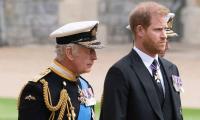LAHORE: A detailed analysis of over 52,000 public sector schools of Punjab province shows that, on an average, boys’ schools have increased by 5.5 times, while girls’ schools have increased by a whopping 59.6 times in the province since 1947.
From 6,223 public schools at the time of independence, Punjab—the largest province of Pakistan in terms of population—has today over 52,000 schools across its 36 districts.
The oldest school in what is now Punjab (Pakistan) was established in Hadali, Khushab district in 1815. Acclaimed Indian novelist and journalist, Khushwant Singh was student of that school.
The most progressive decades in terms of establishment of new schools in Punjab have been 1967-1986. The period is significant keeping in view 1965 and 1971 wars and separation of East Pakistan. This shows the resilience of the country and the priority the then leadership gave to the cause of education.
The detailed analysis was done by The News and Love for Data (LFD) while credit where credit’s due, the Punjab government’s open government policy helped to access the official data pertaining to schools since 1947. The data uploaded on the Punjab Education Sector Reform Programme (PESRP) website last year covers the years from 1947 to 2015 and early 2016.
The substantial increase in girls’ schools could be attributed to low base effect as girls schools in 1947 averaged at 29 per district, while boys’ schools averaged at 143 per district (though many of these areas were not declared districts by that time).
As schools data of other provinces of this time-frame is not available, the analysis is limited to Punjab province only. However, according to a document of Pakistan Bureau of Statistics (PBS), there were total 11,011 schools across Pakistan in 1947-48. This means almost half of the country’s schools were in the Punjab province at the time of independence.
The analysis shows significant progress vis-à-vis female schools in some districts. For example, there were only six female schools in Bahawalnagar district in 1947 and now there are 1,175 girls’ schools. Similarly, Bahawalpur district had eight girls’ schools and it has 915 now while Khanewal had 15 schools and now it has 760. On the other hand, there are districts, which according to data, had low number of schools established each year after 1947.
For example, only six schools were opened every year in Attock as the district had 183 boys’ schools in 1947 and it had 634 by the year 2015. Nonetheless, as per data available on School Education Department website, the district has now 709 boys’ schools which means almost 70 new schools were opened in the district during the last two years.
Similarly, the data shows on average five new schools for boys were opened in Chakwal district every year and three in Jhelum district. While finding out in which decade maximum number of schools were opened in a particular district, the data revealed that maximum schools, 975 schools, were established in Rahimyar Khan between 1967 and 1976. While doing so the past two decades since 1997 did not come up against any district, it is evident not as many new schools were established during these 20 years.
Minister for Mines & Minerals Sardar Sher Ali Gorchani seen in this image on April 1, 2024. — Facebook/Sardar Sher...
This photograph shows students attending a class at a school on the outskirts of Lahore. — AFP/FileLAHORE:Department...
Lahore Waste Management Company workers cleaning the streets. — APP/FileLAHORE:Lahore Waste Management Company has...
UHS Vice Chancellor Prof Ahsan Waheed Rathore sits during a meeting. — X/@uhslhrofficial/File LAHORE:The 79th...
This image shows Punjab police personnel standing alert. — AFP/FileLAHORE:On the instructions of Director General...
Representational image showing dark clouds. — PPI/FileLAHORE:Partly cloudy weather with hot and humid conditions was...







